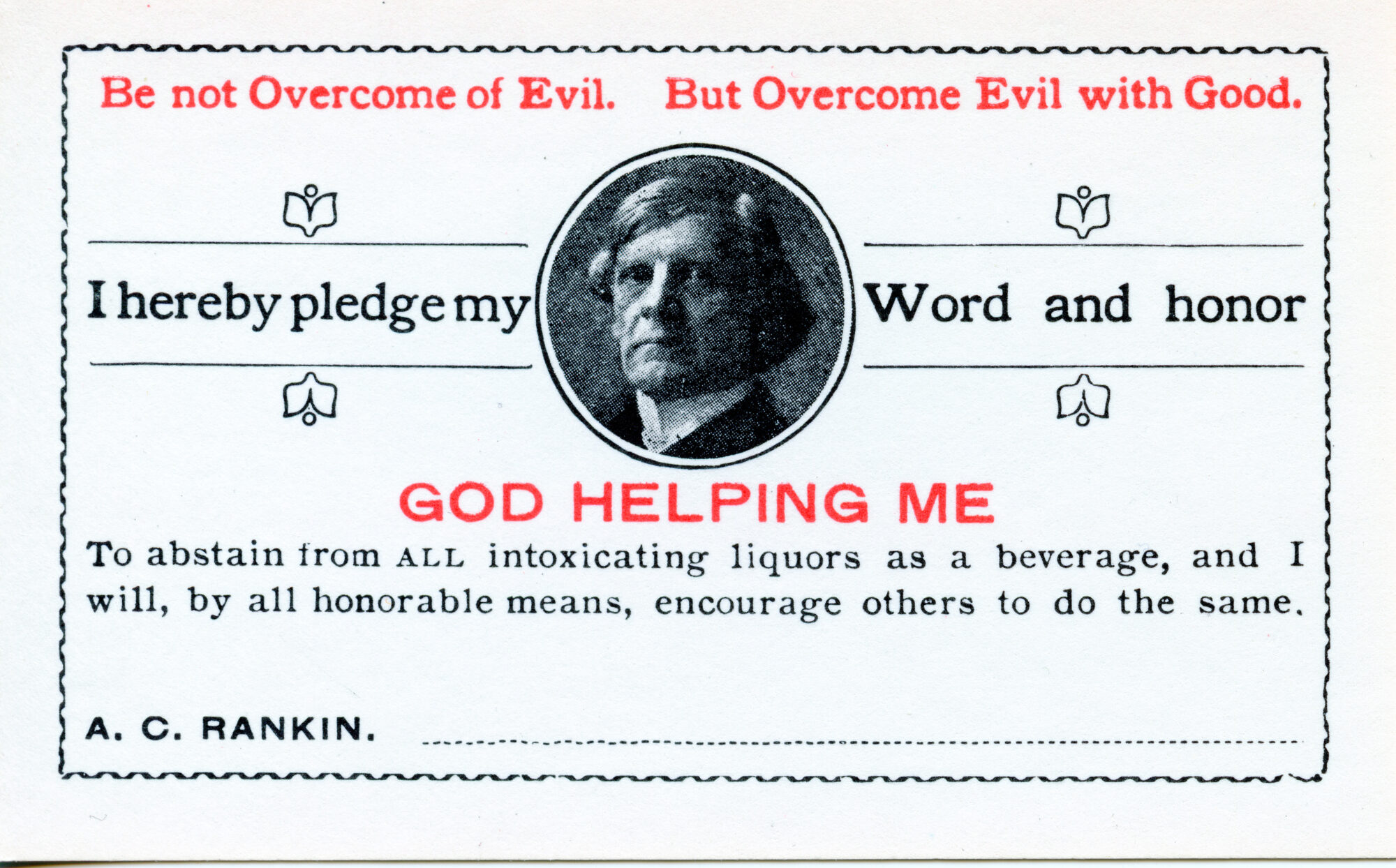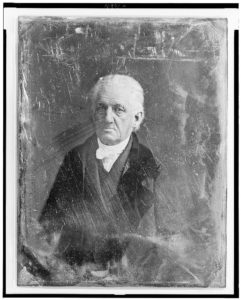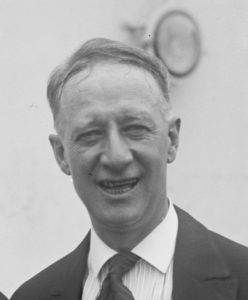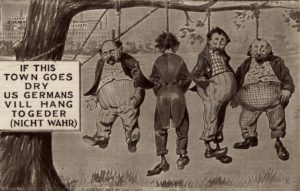Temperance vs. individual liberty
Why Protestants supported Prohibition and religious minorities opposed it

In 1826, a century before Prohibition, Presbyterian minister Lyman Beecher wrote, “No sin has fewer apologies than intemperance.” Beecher founded the American Temperance Society, one of America’s first such organizations, in 1824. At its conventions, Beecher gave speeches with heavy-handed warnings such as:
“. . . of all the ways to hell, which the feet of deluded mortals tread, that of the intemperate is the most dreary and terrific.”
Preachers such as Beecher are often associated with Prohibition and its precursor, temperance. Prohibitionists argued that their opponents were immoral and un-American. They claimed Prohibition would end crime and poverty and create a godlier nation, which never materialized.

But what about the many religious Americans who did not support the Prohibition Amendment? Many ethnic and religious minorities, particularly Catholic and Jewish Americans, saw religious appeals for temperance as a ruse. They viewed it as a way for the Protestant majority to reinforce cultural norms under the pretext of Christianity.
Protestant temperance advocates believed Christians had a duty to improve America’s quality of life. They championed reform that acted as an extension of church discipline, the practice of censuring church members who have sinned. If the Bible denounced drinking or dancing or slavery, church members had a duty to promote reform that protected their communities from these sins. But the Bible does not take a definitive stance against alcohol — only drunkenness. In Ephesians 5:18, Paul warns, “do not get drunk on wine, which leads to debauchery. Instead, be filled with the Spirit.” But even Jesus drinks wine throughout Scripture. In 1846, English Reverend Christopher Newman Hall summed up this point of clarification in The Scriptural Claims of Teetotalism:
“Alcoholic drinks are not injurious to those who use them in moderation; that the wines of Scripture were all of them fermented, and therefore intoxicating, if taken in sufficient quantities . . . such was the beverage which our Lord produced, and of which he and his disciples frequently partook.”
Still, as the 19th century progressed, more American Protestants chose to support the temperance movement.
Most Catholic and Jewish Americans did not share this enthusiasm for temperance. German, Irish and Italian Catholic communities embraced drinking as a regular part of life. Even the most conservative Orthodox Jewish communities drank alcohol. These immigrant groups also had financial ties to the liquor industry. German American breweries, Irish American distilleries, and both Italian American and Jewish American wineries were often the financial backbones of their communities.
At the turn of the century, the temperance movement became stronger and more political. This shift was driven by anti-immigrant sentiment more than religious belief. The Indiana chapter of the Women’s Christian Temperance Union (WCTU) asserted that 75 percent of Prohibition offenders were foreigners. The WCTU and similar organizations targeted Catholic immigrants for allegedly importing dangerous drinking cultures.
For many working-class immigrants subjected to six-day work weeks, Sunday was more than just the Sabbath. They saw religious freedom as a guarantee that they could spend Sundays however they pleased. Among German American communities, families often spent their free time in beer gardens. Unlike male-only saloons, beer gardens were open to the whole family. Americans unaccustomed to bringing their wives and children to the saloon found this distasteful.
By and large, Protestant Americans believed Catholic immigrants were heavier drinkers. Statistics do not support this assertion. Americans were heavy drinkers long before large numbers of Catholics immigrated. In 1830, the average American consumed at least seven gallons of alcohol a year. By 1870, it dropped to about two gallons, where it has hovered since.
Jewish Americans were rarely accused of overdrinking, but wine was a part of Shabbat and most Jewish holidays. Many American Jews were also invested in distilling and winemaking. They opposed Prohibition for what it symbolized: oppressing the rights of minorities, whether religious or economic. Polish American Rabbi Marcus Jastrow likened Prohibition to economic oppression and tyranny.

For Prohibition opponents, limiting personal freedom was one of the most sinister parts of the dry movement. In a 1908 speech, German-American poet George Sylvester Viereck explains:
“We [German-Americans] have no interest in the drunkard; we are sorry for him, but we are not concerned in him in questions relating to personal freedom.”
During the 1928 presidential election, Irish-Catholic Democratic candidate Al Smith openly criticized Prohibition. He cautioned that outlawing something previously viewed as innocent was causing massive problems. In return, his opponents likened him to a bootlegger and accused him of being a mouthpiece for the pope. But Prohibition had turned many law-abiding citizens into liars and criminals.
Even among Protestants, the temperance movement alienated minorities. Support for Prohibition in black churches was broader than among Catholics and Jews, but African Americans served as powerful swing voters against Prohibition. They voted decisively against statewide Prohibition in Texas in 1911. In Southern states such as Alabama and Georgia, politicians used this to justify black disenfranchisement.
Minority groups generally did not see Prohibition as a question of devoutness. They viewed it as a way to enforce cultural standards. While temperance advocates envisioned a world free of crime and poverty, their opponents saw an infringement on individual rights. And their opponents were vindicated. During Prohibition, America discovered temperance could not create its desired effect.

Crime skyrocketed. Homicides increased from 7.2 per 100,000 people in 1919 to 9.7 in 1933. Illegal speakeasies run by organized crime syndicates flourished across the country. Many of those syndicates were made up of the same ethnic and religious minorities who opposed the law to begin with. Prohibition failed to create the safer society its advocates envisioned. Upon the repeal of Prohibition in 1933, Al Smith reflected:
“I felt all along that when this matter was properly submitted to the rank and file of our people, that they would readily see that it had no place in our Constitution. It would be very difficult, if not impossible, to estimate the benefits that would come to this country from the lesson taught to the coming generations to make it their business to see that no such matter, ever again, is made the subject of federal constitutional law.”
Feedback or questions? Email blog@themobmuseum.org





